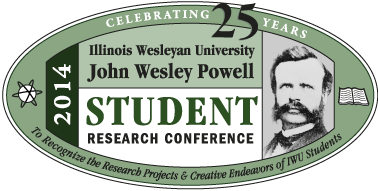Submission Type
Event
Expected Graduation Date
2014
Location
Ames Library, Illinois Wesleyan University
Start Date
4-11-2014 6:00 PM
End Date
4-11-2014 7:00 PM
Disciplines
Education
Abstract
“As the diversity of the K-12 student population increases, it is critical that teachers differentiate their instruction to meet all students’ needs” (Parsons, 2013, p.42). In an effort to determine how I can differentiate language arts instruction for a diverse group of students, I conducted a self-study through reading centers in a first grade classroom. I began by assessing my students’ intelligences according to Gardner’s Multiple Intelligences Theory, and I observed each student, taking note of their habits and tendencies in the classroom. I used this data collected on students’ learning tendencies and intelligences to place them into groups and plan language arts lessons for reading centers. In these lessons, I explored the various ways I could differentiate for different types of learners, such as incorporating movement in teaching kinesthetic learners and oral discussion with auditory learners. Examining the data I collected from video recordings of these lessons, samples of student work, and my own personal field notes, I identified the strategies I used to differentiate my instruction for students. The results that I gleaned from this research illuminate methods a teacher can use in order to implement differentiation in their own first grade language arts classroom.
Parsons, S. A., Dodman, S. L., & Cohen Burrowbridge, S. (2013). Broadening the view of differentiated instruction. Phi Delta Kappan, 95(1), 38-42.
Included in
Differentiation Strategies Through Reading Centers
Ames Library, Illinois Wesleyan University
“As the diversity of the K-12 student population increases, it is critical that teachers differentiate their instruction to meet all students’ needs” (Parsons, 2013, p.42). In an effort to determine how I can differentiate language arts instruction for a diverse group of students, I conducted a self-study through reading centers in a first grade classroom. I began by assessing my students’ intelligences according to Gardner’s Multiple Intelligences Theory, and I observed each student, taking note of their habits and tendencies in the classroom. I used this data collected on students’ learning tendencies and intelligences to place them into groups and plan language arts lessons for reading centers. In these lessons, I explored the various ways I could differentiate for different types of learners, such as incorporating movement in teaching kinesthetic learners and oral discussion with auditory learners. Examining the data I collected from video recordings of these lessons, samples of student work, and my own personal field notes, I identified the strategies I used to differentiate my instruction for students. The results that I gleaned from this research illuminate methods a teacher can use in order to implement differentiation in their own first grade language arts classroom.
Parsons, S. A., Dodman, S. L., & Cohen Burrowbridge, S. (2013). Broadening the view of differentiated instruction. Phi Delta Kappan, 95(1), 38-42.


